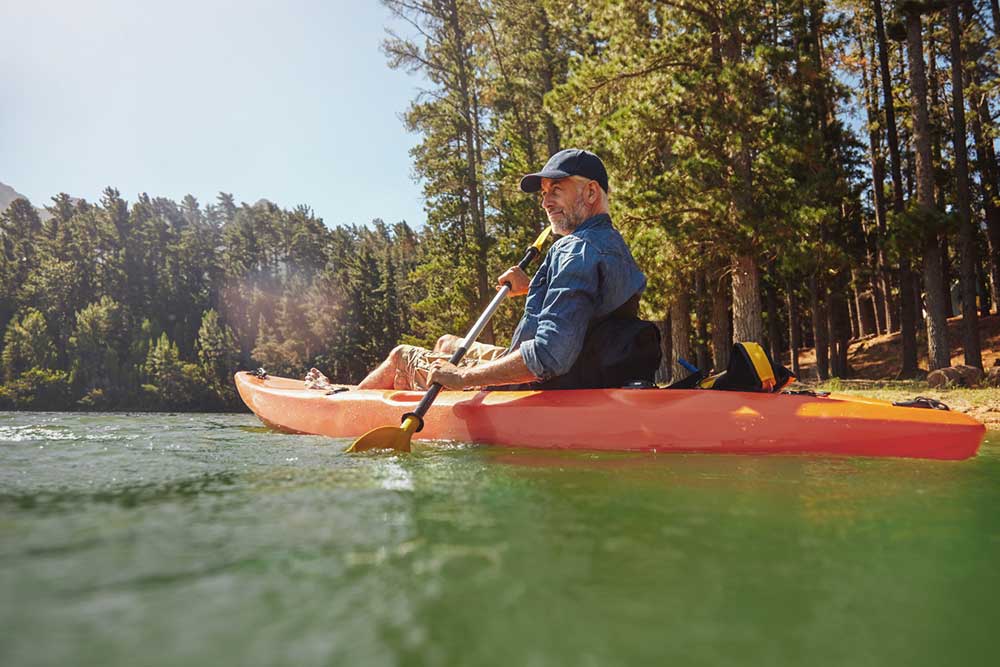Exercise-Induced Increases in Brain Size

Julia Basso – PhD
Carbon dating in the human brain: Implications for exercise-induced increases in brain size
Do you ever wonder why scientists use animal models? Are you skeptical of findings in rodents and find it difficult to understand the importance of these discoveries for humans? If so, that is a totally reasonable sentiment. Rodents don’t look very much like humans. However, because of evolution, the brain is surprisingly similar across species. For example, the structure of the rodent brain looks very much like that of the human brain, albeit, much more complex. The rodent brain contains 200 million neurons, whereas the human brain has an estimated 100 billion (or more!) (Herculano-Houzel, 2009).
The way the brain deals with this increase in neuronal number is to increase its surface area. This is why the human brain looks much more “wrinkled” than the rodent brain. It folds in on itself, creating the wrinkles that we call the gyri and sulci. Because of similarities in anatomy, scientists reason that the physiology and function of the human and rodent brain are similar as well. Of course, studies need to be conducted in both species to assure that this is true. Often, due to limitations in technology, these kind of comparisons can be challenging.
A group of very clever scientists were recently inspired by a technique used in archaeology, known as carbon dating, to open up the study of a fascinating area of research in humans –neurogenesis. Though it was originally thought that the adult brain is stagnant and incapable of producing new neurons, researchers discovered that certain regions of the brain can actually produce new cells. This process is called neurogenesis, and exercise is one of the most potent ways to increase rates of neurogenesis. Unfortunately, until recently, we were only able to examine these effects in rodents.
Related Article: Exercise Increases Neurons in the Brain
Scientists realized that they could birthdate cells by taking advantage of carbon dating in the human brain. Because of nuclear bomb testing that occurred between 1955 and 1963, carbon-14 (14C) levels dramatically increased in the earth’s atmosphere. 14C replaced much of the non-radioactive carbon in living plants and animals, and because humans consume these things, 14C became incorporated into the cells of humans as well. Interestingly, Spalding and colleagues revealed that the level of atmospheric 14C predicts the levels found in human DNA (deoxyribonucleic acid) (Spalding et al., 2005). These measurements can be used to establish the age of the cells and therefore rates of neurogenesis and cell turnover in the human brain – a feat that, until recently, we were only able to study in rodents.
In a recent review, Ernst and Frisén report that, “this research has revealed both that there is more extensive neuronal turnover than many had predicted, and that there is a unique distribution of adult neurogenesis in the adult human brain compared to other mammals” (Ernst & Frisén, 2015). In rodents, the primary location of new neuron formation is in the hippocampus, a region important for learning and memory, as well as the olfactory bulb, a region important for the sense of smell. Humans, however, new neurons primarily form in the hippocampus and the striatum, a brain region involved in motor movement as well as reward and motivation. The authors conclude that this may be due to evolution. As we evolved, we became less dependent on olfaction and more reliant on movement coordination, cognition, and emotion – abilities dependent on the interaction between the striatum and cortex.
Not surprisingly, long-term exercise and high levels of cardiovascular fitness are both associated with increased size of the hippocampus, striatum, and prefrontal cortex (Colcombe et al., 2006; Erickson et al., 2011; Becker et al., 2016) – an indication that physical activity promotes growth of new neurons throughout the human brain. As the growth of new neurons are thought to contribute to improvements in cognitive functioning and mood, future studies should examine the relationship between exercise-induced changes in brain size and function. Quite morbidly, the carbon dating studies mentioned above are performed in post-mortem brain tissue. Therefore, in order to get an accurate assessment of rates of exercise-induced neurogenesis in humans, future studies will be needed where physical activity habits or cardiopulmonary fitness measures are captured before the time of death.
Related Article: Fitness Helps Brain Function As We Age
As we age, rates of neurogenesis decline. Excitingly, exercise helps prevent this decrease in neurogenesis. We can actually slow down age-related brain shrinkage by simply engaging in regular bouts of physical activity. One longitudinal study examined the brains of 120 older adults (ages 55 to 80) before and after one year of a physical activity program (Erickson et al., 2011). Half of the participants were randomly assigned to an aerobic exercise group where they walked for 40 minutes, 3 times per week at 60-75% of their maximum heart rate.
The other half were randomly assigned to a stretching and toning control group. Over the course of 1 year, the hippocampus of participants in the control group shrunk in size by approximately 1.5%. In contrast, those individuals who engaged in aerobic exercise showed a 2% increase in the size of the hippocampus. Further, those individuals who showed the greatest improvements in physical fitness showed the greatest increases in hippocampal size. These results are proof that chronic exercise helps to prevent age-related shrinkage in brain regions essential for our learning and memory capacities.
Exercise has also been reported to increase brain size and improve symptoms in individuals with neurodegenerative diseases such as Alzheimer’s and Parkinson’s disease (Ang et al., 2010). Currently, no effective treatment exists for these neurodegenerative diseases, so much more research is warranted in this field. Researchers, however, have shown that with a physically active lifestyle, we may be able to prevent or delay cognitive decline as well as treat symptoms in individuals with already existing diagnoses.
Collectively, this work shows that exercise is able to increase the growth of new neurons in the brain, prevent age-related brain shrinkage, and help heal the brain of individuals with neurodegenerative disorders. Future studies should examine these exciting findings in relation to the positive behavioral changes that exercise causes.
Related Article: Exercise and Alzheimer’s Disease
References:
Ang, E. T., Tai, A., Lo, S. Q., Seet, R., & Soong, T. W. (2010). Neurodegenerative diseases: exercising towards neurogenesis and neuroregeneration. Frontiers in aging neuroscience, 2, 25.
Becker, L., Kutz, D. F., & Voelcker-Rehage, C (2016). Exercise-induced changes in basal ganglia volume and their relation to cognitive performance.
Colcombe, S. J., Erickson, K. I., Scalf, P. E., Kim, J. S., Prakash, R., McAuley, E., … & Kramer, A. F. (2006). Aerobic exercise training increases brain volume in aging humans. The Journals of Gerontology Series A: Biological Sciences and Medical Sciences, 61(11), 1166-1170.
Erickson, K. I., Voss, M. W., Prakash, R. S., Basak, C., Szabo, A., Chaddock, L., … & Wojcicki, T. R. (2011). Exercise training increases size of hippocampus and improves memory. Proceedings of the National Academy of Sciences, 108(7), 3017-3022.
Ernst, A., & Frisén, J. (2015). Adult neurogenesis in humans-common and unique traits in mammals. PLoS Biol, 13(1), e1002045.
Herculano-Houzel, S. (2009). The human brain in numbers: a linearly scaled-up primate brain. Frontiers in human neuroscience, 3, 31.
Spalding, K. L., Bhardwaj, R. D., Buchholz, B. A., Druid, H., & Frisén, J. (2005). Retrospective birth dating of cells in humans. Cell, 122(1), 133-143.
Spalding, K. L., Bhardwaj, R. D., Buchholz, B. A., Druid, H., & Frisén, J. (2005). Retrospective birth dating of cells in humans. Cell, 122(1), 133-143.
You Might Like:
















